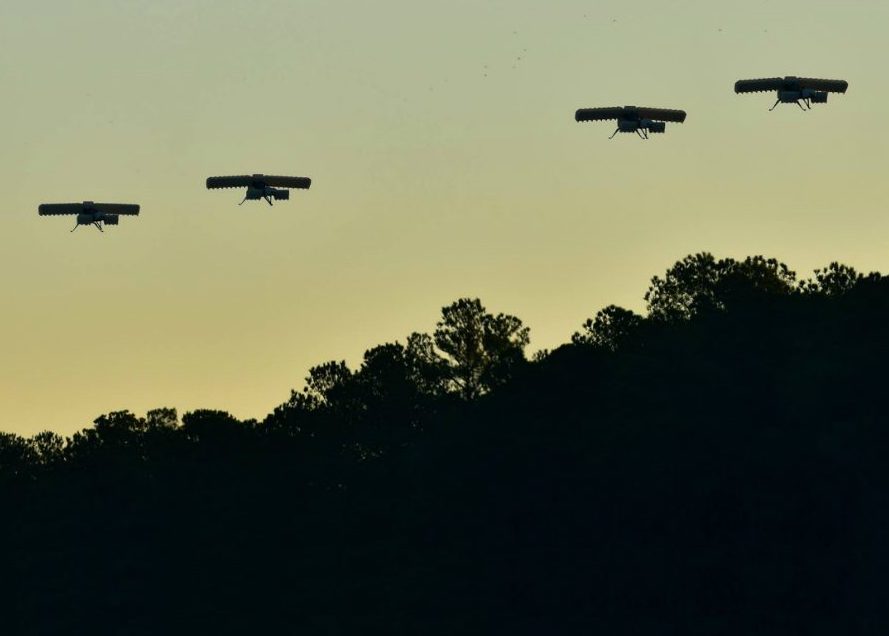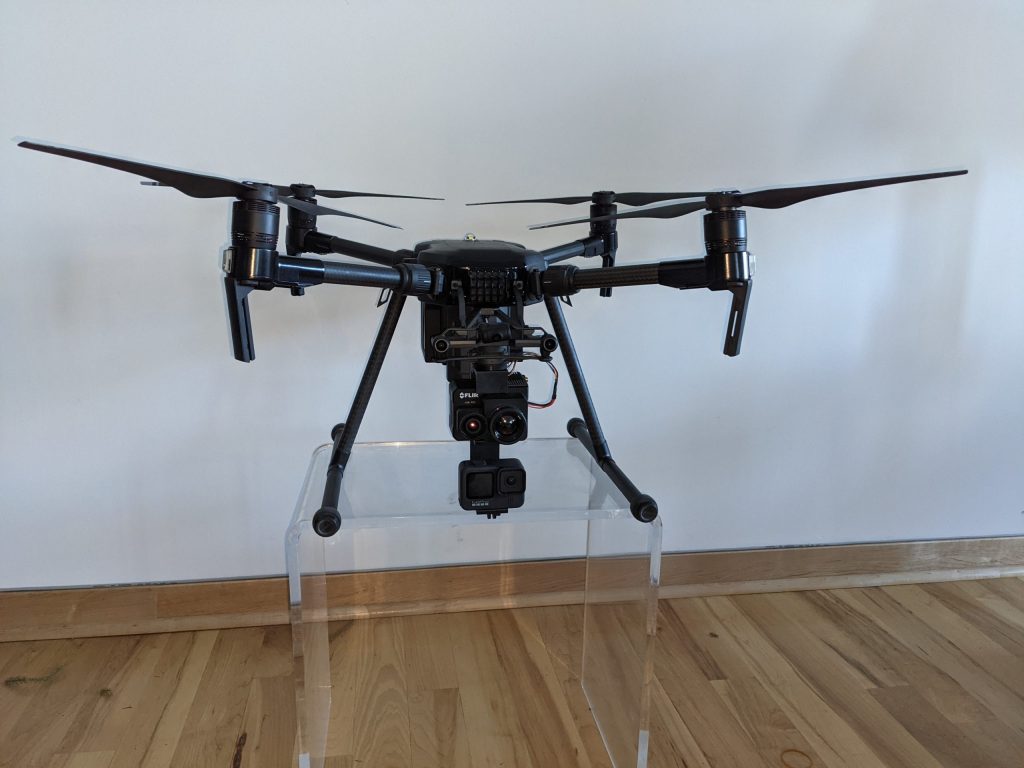The Royal Air Force (RAF) is developing an aerial attack unit featuring 3D printed drones that can be fitted with munitions and used to destroy strategic targets, a senior UK military official has announced.
Having scrapped its previous ‘Mosquito’ drone-building program, the RAF has now switched its focus to creating a fleet of UAVs that can be deployed with greater urgency. According to the UK’s Chief of Air Staff, Sir Mike Wigston, technologies like 3D printing are aiding these efforts, by enabling devices to be rapidly built and launched on-demand.
“Our swarming drone trials point to the enormous operational potential for these systems to confuse and overwhelm an adversary’s air defenses,” said Wigston. “We are exploring new models of capability delivery and accelerated production ‘when we need them’ rather than ‘in case we need them,’ from the twin-jet 3D printed ‘Pizookie,’ to commercially-available large drones fitted with novel payloads and large quadcopters.”

Moving from ‘Mosquito’ to the ‘Pizookie’
Until just last month, the UK military’s drone-building efforts (at least publicly) centered on the Mosquito Program, an initiative set up to enable the R&D of a ‘Loyal Wingman’ demonstrator. The idea behind this rapid, unmanned aircraft, was to deploy it in support of fighter jets or helicopters in high-threat environments, in a way that enabled them to operate without restriction over enemy lines.
However, even though a prototype build was already said to be well underway and on-course for a test run in 2023, the program was scrapped in late-June. The official line on the decision is that it was “informed by parallel analysis and capability experimentation,” through which it was decided that Mosquito’s goals can be achieved more effectively via “smaller, less costly” devices.
While the UK Ministry of Defence (MoD) appears to have mothballed the initiative altogether, Wigston revealed in a recent speech at the Global Air & Space Chiefs’ Conference, that another has now taken its place. Through this revised program, the RAF has trialed five more compact drone designs across thirteen experiments, in which the efficacy of payloads, platforms and control systems were assessed.
Based on the results of these tests, as well as the Mosquito Program’s findings, Ian Williams-Wynn, MD of drone manufacturer Blue Bear, told the Telegraph that swarms of such UAVs could be deployed by the UK military as soon as next year.
Developed at a reported cost of £4 million, the drones themselves are understood to include models with wildly-varying configurations, ranging from those akin to off-the-shelf devices to larger systems capable of carrying large payloads. The program has also allowed for the creation of a 3D printed twin-blade device known as the ‘Pizookie,’ although its layout and inner workings haven’t been made public.

Will the drone swarms be used in Ukraine?
In his speech, Wigston didn’t directly say that the RAF’s drone swarms are being developed to support Ukraine’s efforts to fight off Russia’s ongoing invasion of the country, but he did allude to it many times. The Chief of Staff said much of his speech would be “shaded by the heroic and effective defense of Ukraine,” and at one point, he even described events there as “a rallying call” to British leaders.
If the war in Ukraine was to extend into 2023, and the UK went on to ramp-up its already significant support of the nation’s military with swarms of drones, this wouldn’t actually be without precedent. Reports of drones, some of those produced, maintained or modified using 3D printing, being used to attack Russian positions, have circulated online since the war began in earnest earlier this year.
As reported by CTV News in May 2022, the Ukrainian military has started 3D printing drone canisters at one of the country’s secretive bases, which can be filled with explosives and dropped on targets up to 45 kilometers away. More recently, TopGeek has reported that Ukrainian yachtsmen are also engaged in the development of ‘mini-Bayraktars,’ fully-printed drones small enough to evade Russian detection.
Of course, the evolving nature of the conflict makes verifying these claims difficult to do, but the existing evidence of 3D printing’s usage in Ukraine, does at least lend them some credence. Since the war began, it has emerged that Russia is using 3D printing to prolong the life of MiG-31s, while on the ground, activists have turned to 3D scanning to archive heritage sites, before Russia destroys them.

3D printing-enabled military drones
Outside of the MoD’s drone swarm initiative, several other military organizations have also adopted 3D printing in the past, as a means of developing UAVs with enhanced capabilities. In May 2021, Continuous Composites was awarded a $750,000 contract by the US Department of Defense to 3D print multifunctional composite wing structures for use in low-cost, disposable unmanned aircraft.
Elsewhere, away from the military sector, drones have also been developed using the technology for civilian purposes. Agricultural start-up Dragontech, for instance, has begun leveraging MakerBot systems to create 3D printed drone brackets and mounts from carbon fiber, which it uses to hold sensors onto crop-tracking UAVs.
CRP Technology has operated in the UAV market for some time as well, and its Windform TOP-LINE composites are increasingly enabling designers to 3D print drone parts with specific functionalities. While some of its materials are electrically conductive and static dissipative, allowing for multiple types of electronics to be housed together, the firm highlights how others feature a flame retardancy that make them ideal for creating fire-tracking drones.
To stay up to date with the latest 3D printing news, don’t forget to subscribe to the 3D Printing Industry newsletter or follow us on Twitter or liking our page on Facebook.
For a deeper dive into additive manufacturing, you can now subscribe to our Youtube channel, featuring discussion, debriefs, and shots of 3D printing in-action.
Are you looking for a job in the additive manufacturing industry? Visit 3D Printing Jobs for a selection of roles in the industry.
Featured image shows a swarm of drones. Photo via the Modern War Institute.


